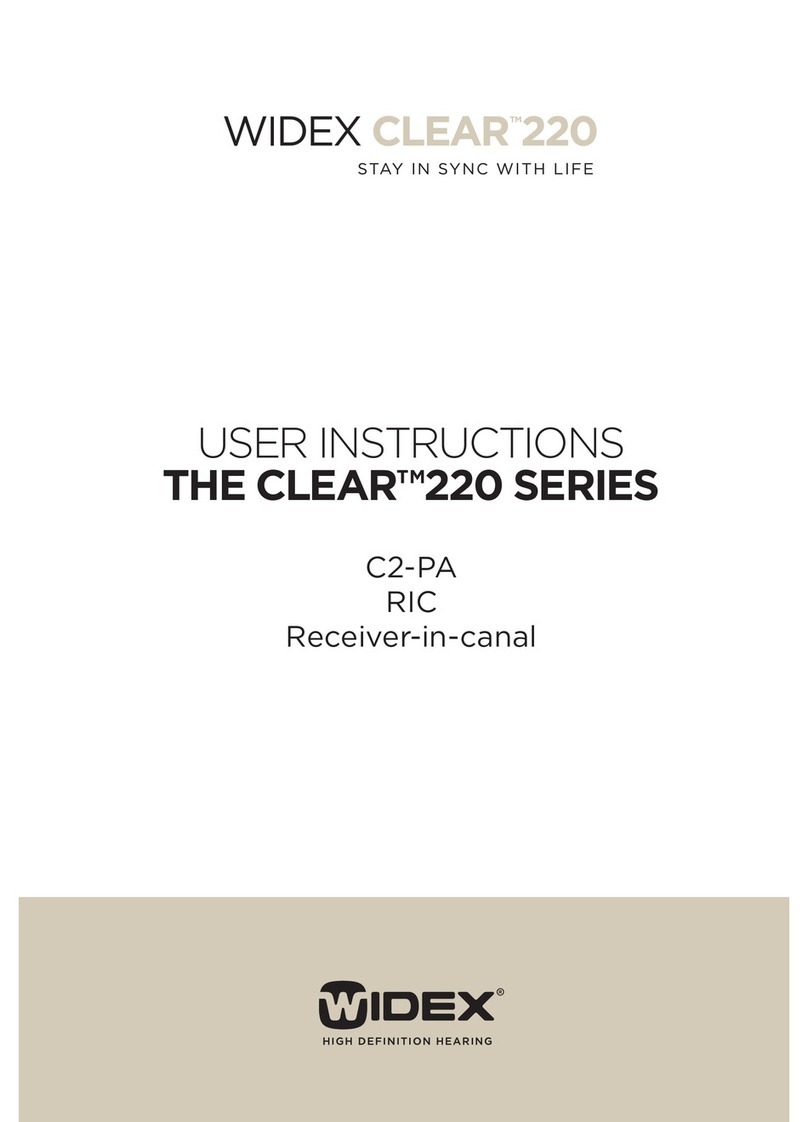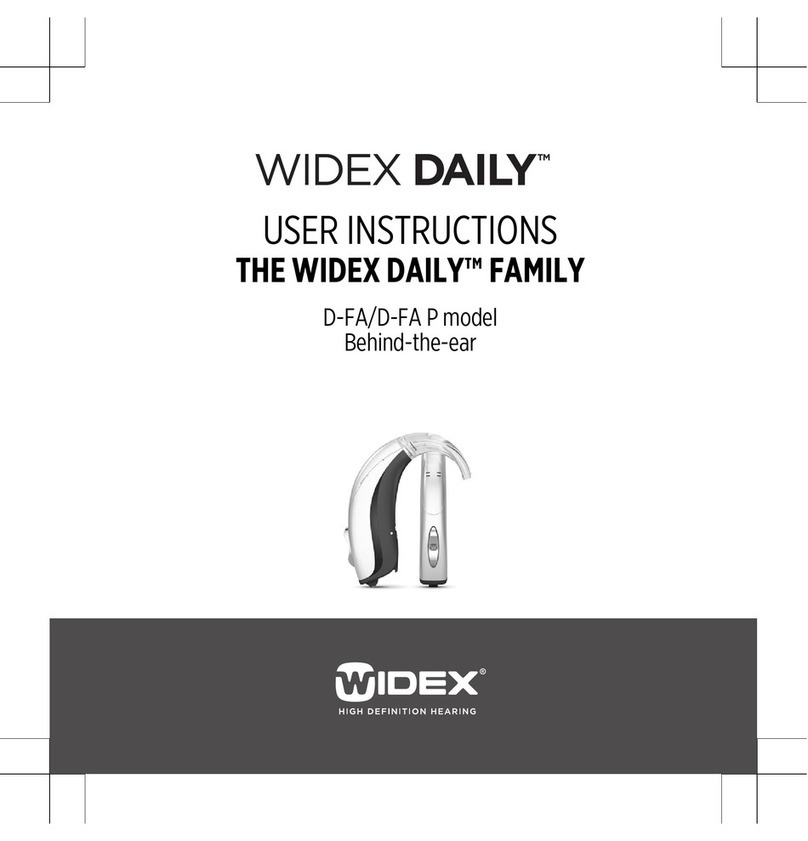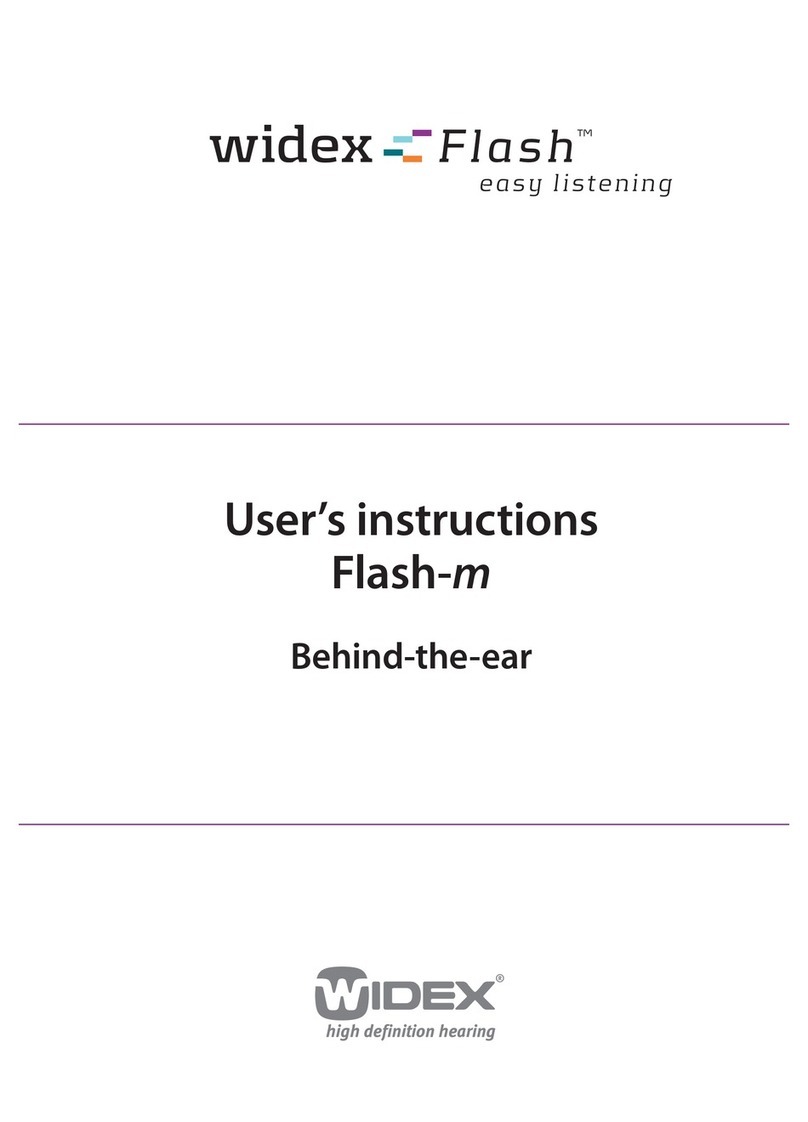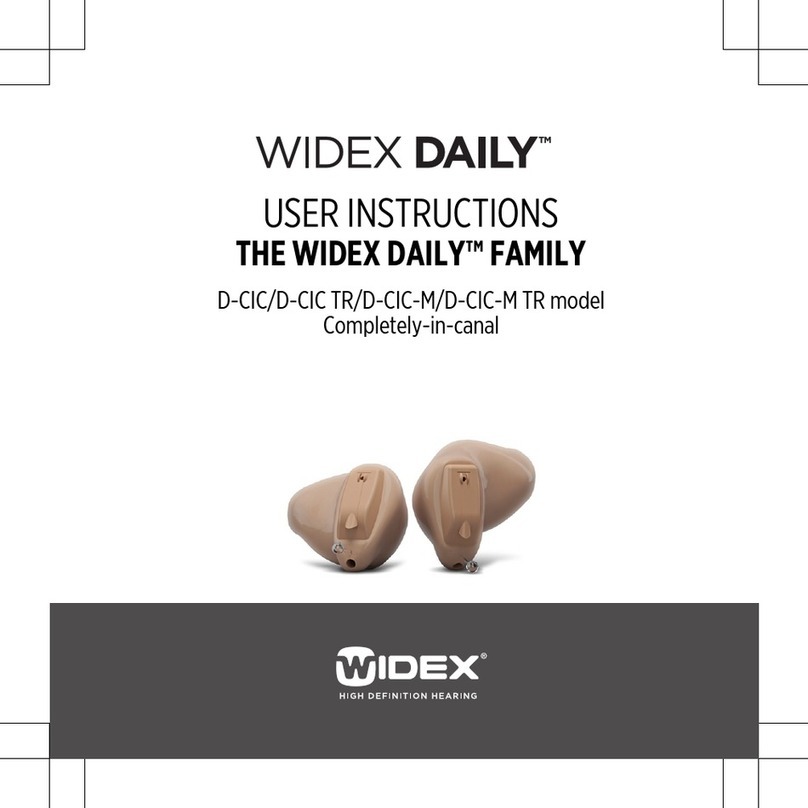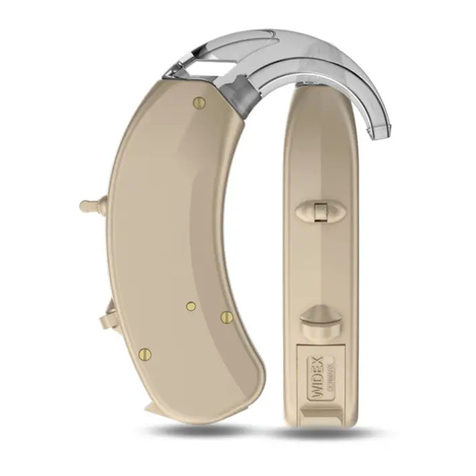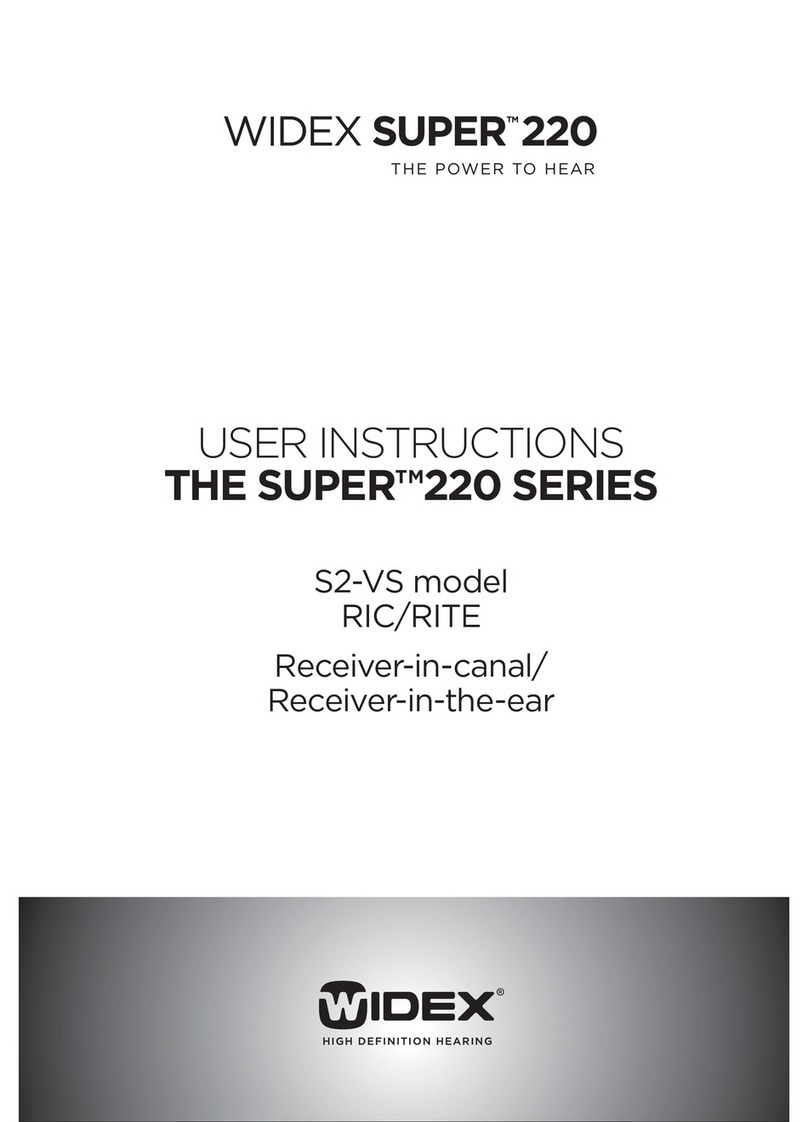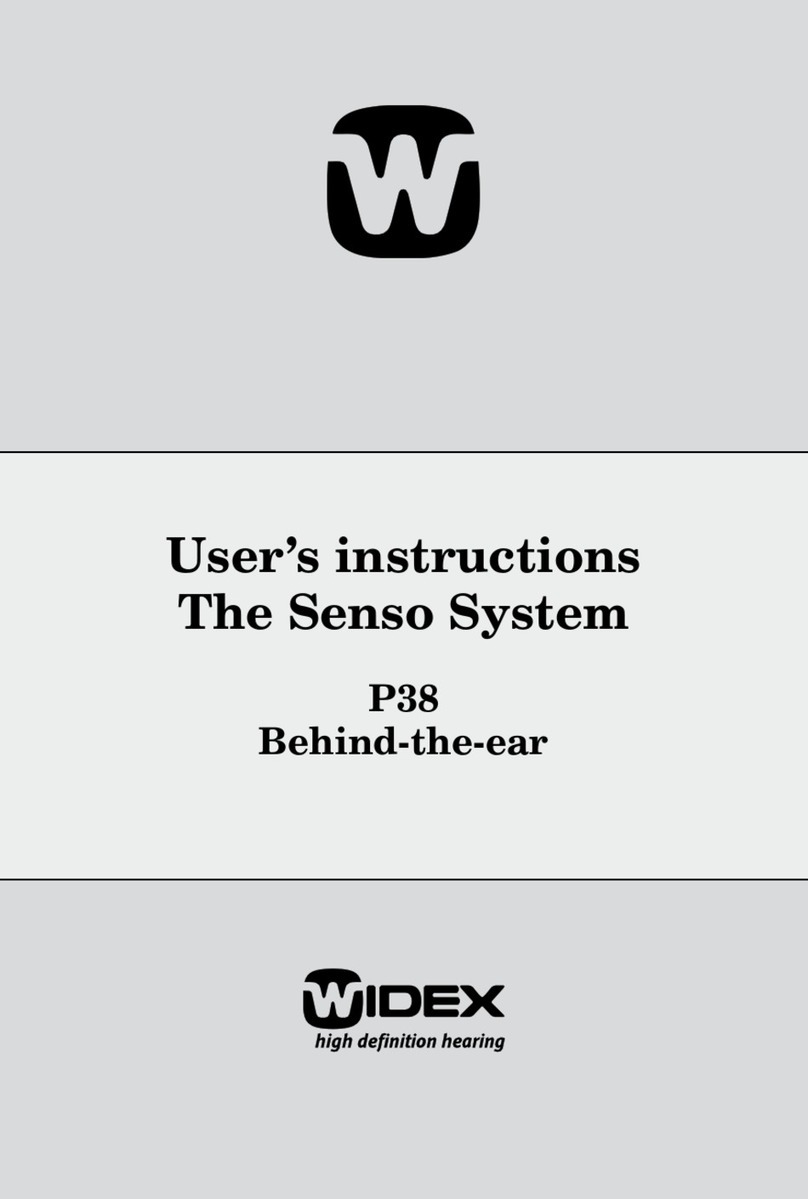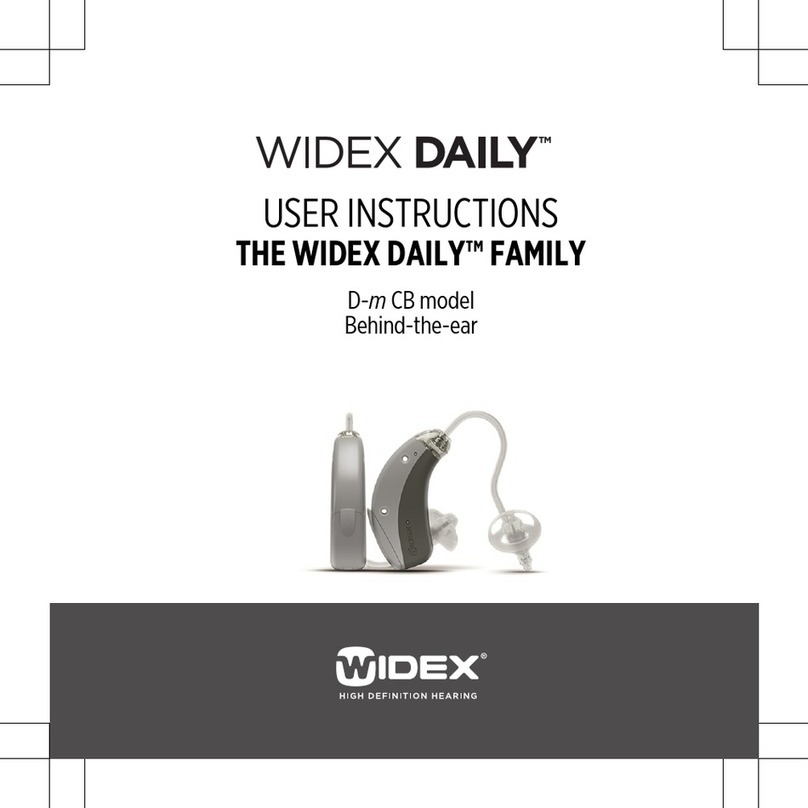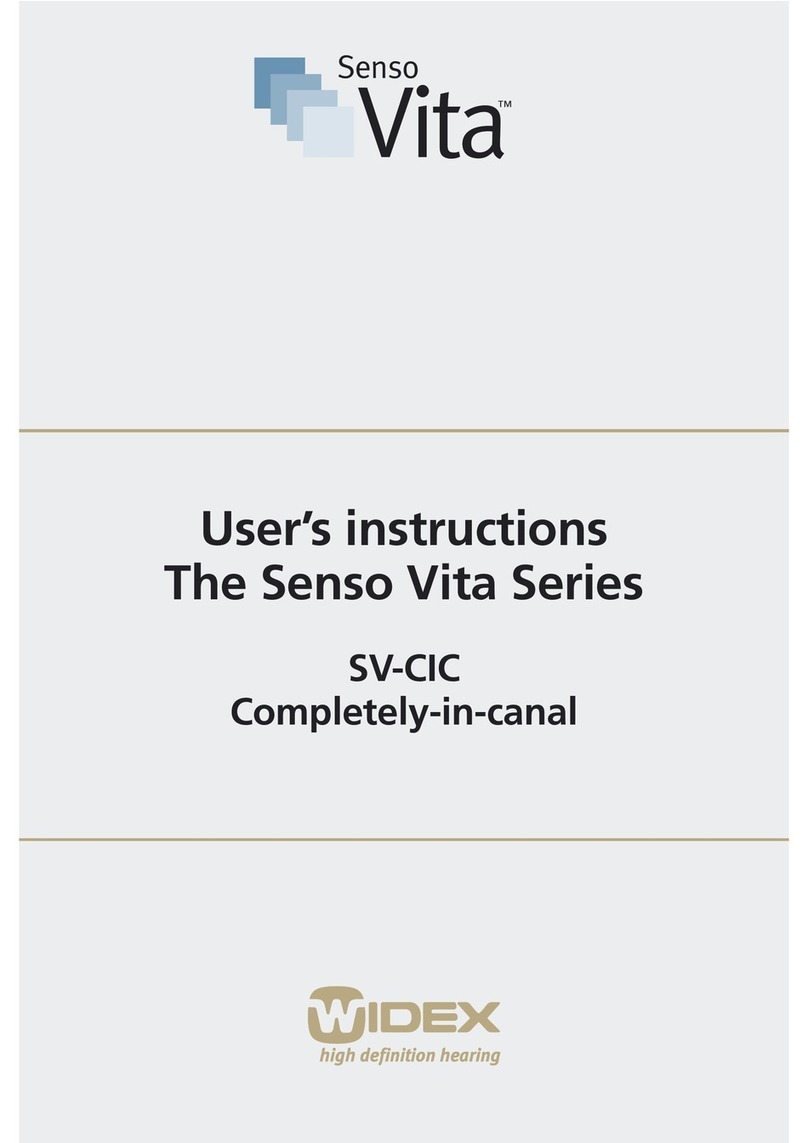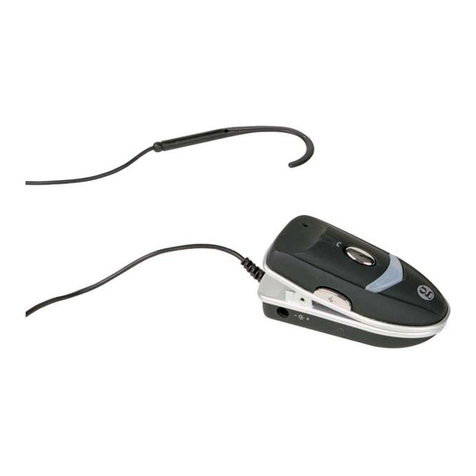Contents
YournewSensoDiva...............................4
SensoDiva.......................................6
Thebattery ......................................7
Batterytype ...................................7
Insertingthebattery .............................7
Changingthebattery ............................9
Turning the hearing aid on and off . . . . . . . . . . . . . . . . . . . 11
Left/right identification . . . . . . . . . . . . . . . . . . . . . . . . . . . 12
Placing Senso Diva on/in the ear . . . . . . . . . . . . . . . . . . . . 13
RemovingSensoDiva .............................15
Automatic adjustment of loudness . . . . . . . . . . . . . . . . . . . 16
Finetuningloudness ..............................17
Listeningprograms ...............................18
Listeningprograms: ............................19
Switching between the listening programs . . . . . . . . . . . 20
KeepingSensoDivaclean ..........................22
Cleaningaccessories ............................22
Thehearingaid ...............................23
Theearmold ..................................24
Getting used to the hearing aid . . . . . . . . . . . . . . . . . . . . . . 26
Thereisonlyoneway...........................26
Beginning to use the hearing aid . . . . . . . . . . . . . . . . . . 27
Caringforyourhearingaid .........................28
Goodadvice.....................................30
Accessories .....................................32
FMsystems ..................................32
Audioinput ..................................33
Incaseofmalfunction .............................34
Your hearing aid, earmold, cleaning accessories and
the like may not look exactly the same as in these user’s
instructions. We furthermore reserve the right to make
any changes considered necessary.
Hearing aids and their accessories should
not be disposed of with normal household
waste. Please consult your national Widex
distributor for advice on how to dispose of
your hearing aid.
